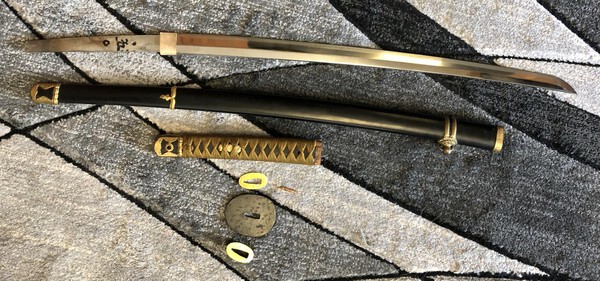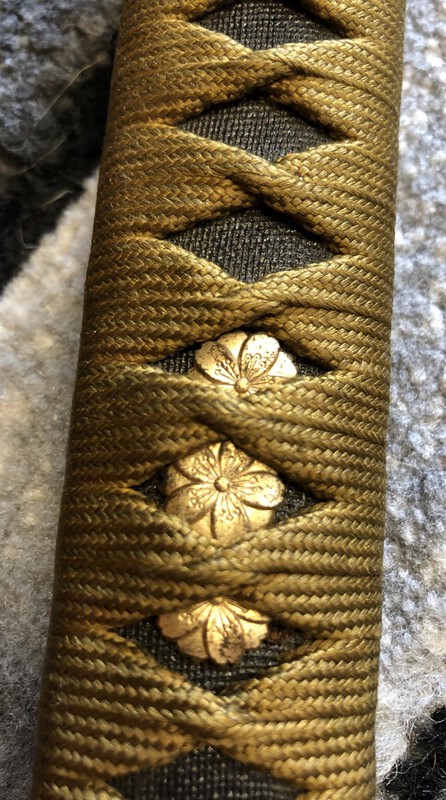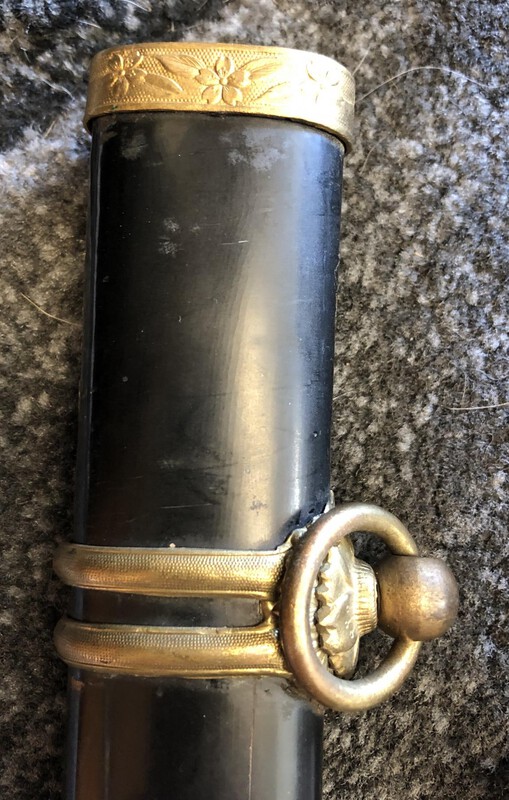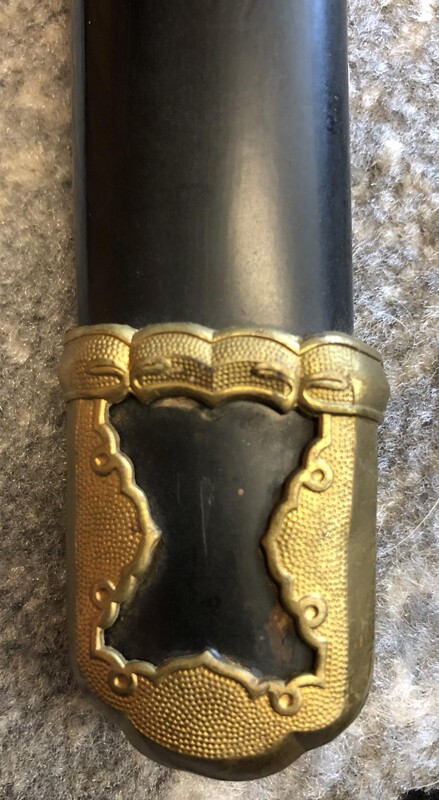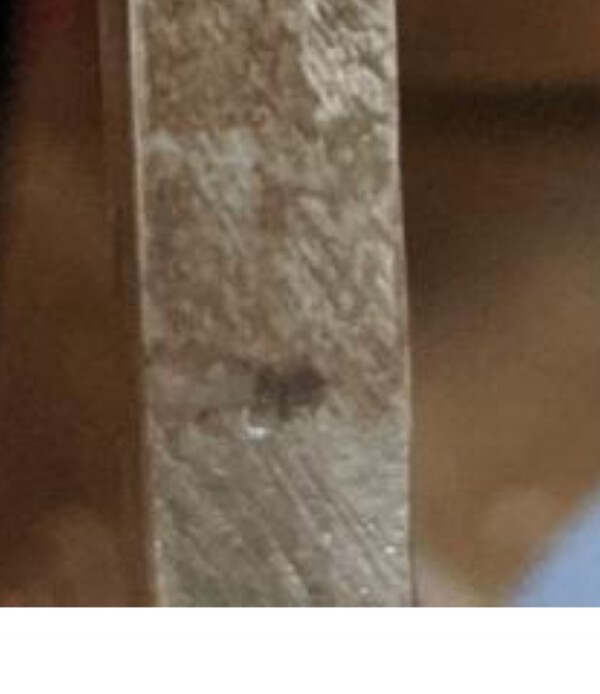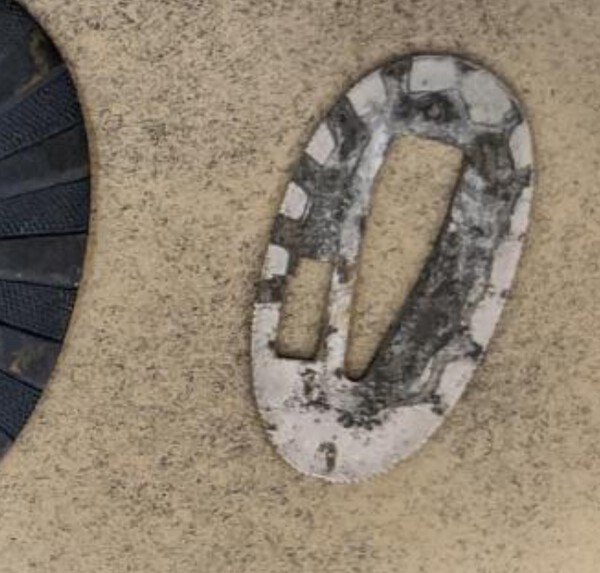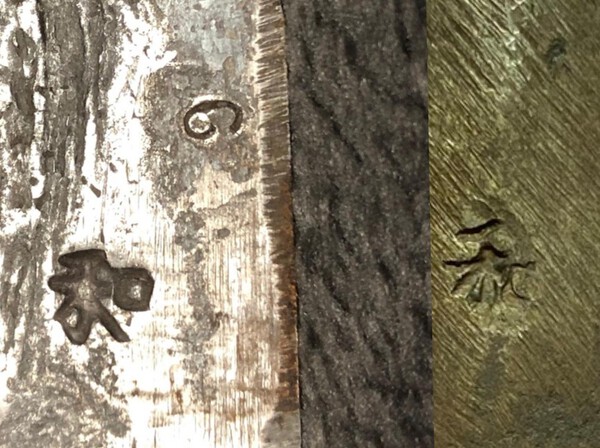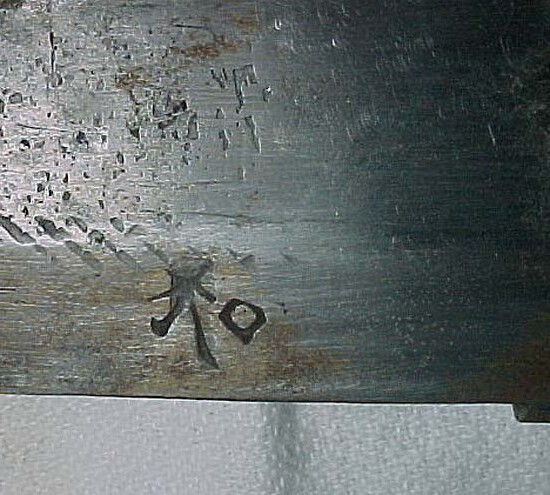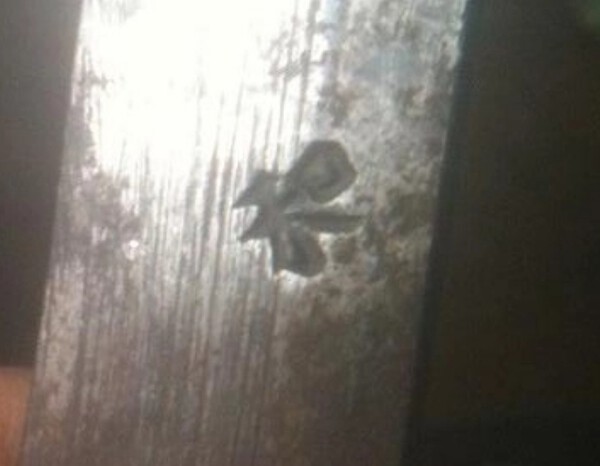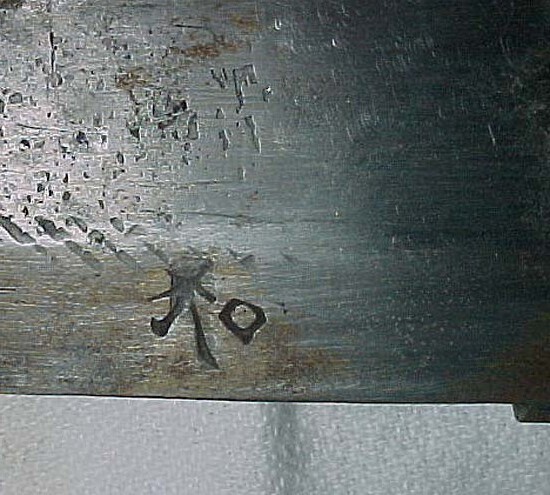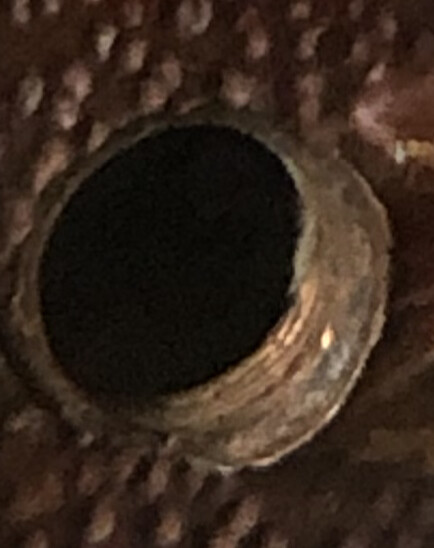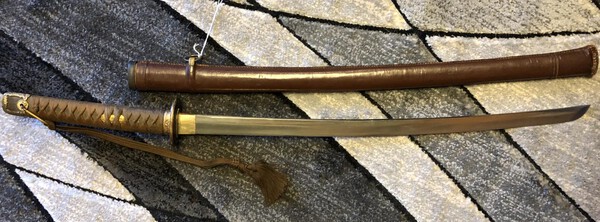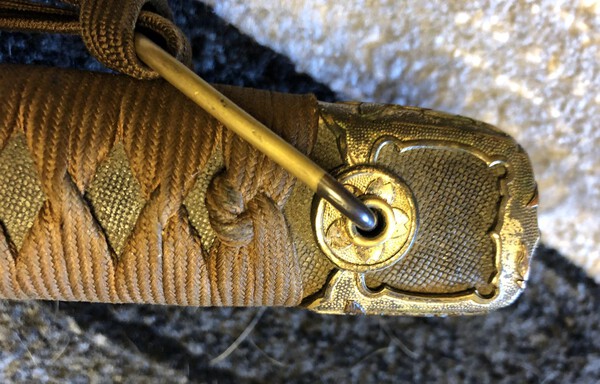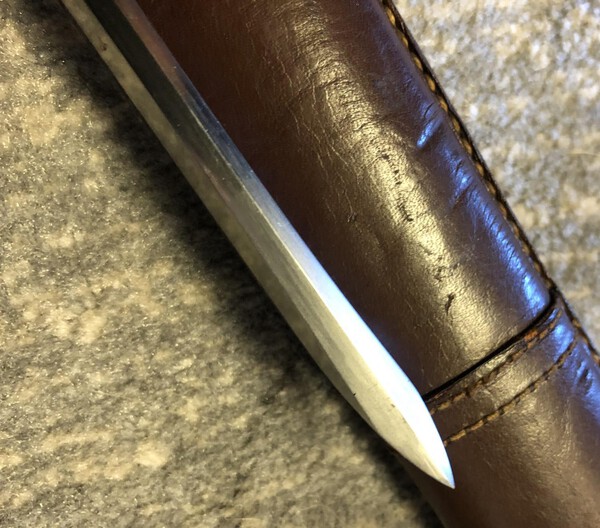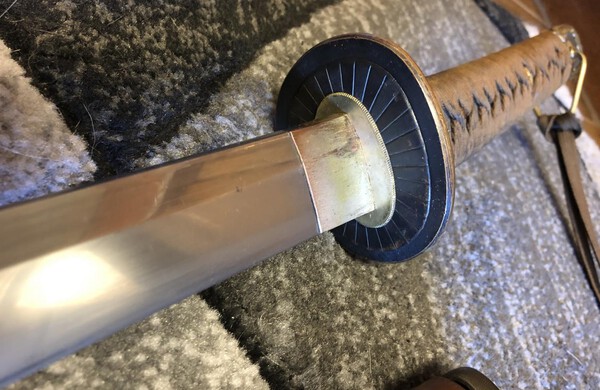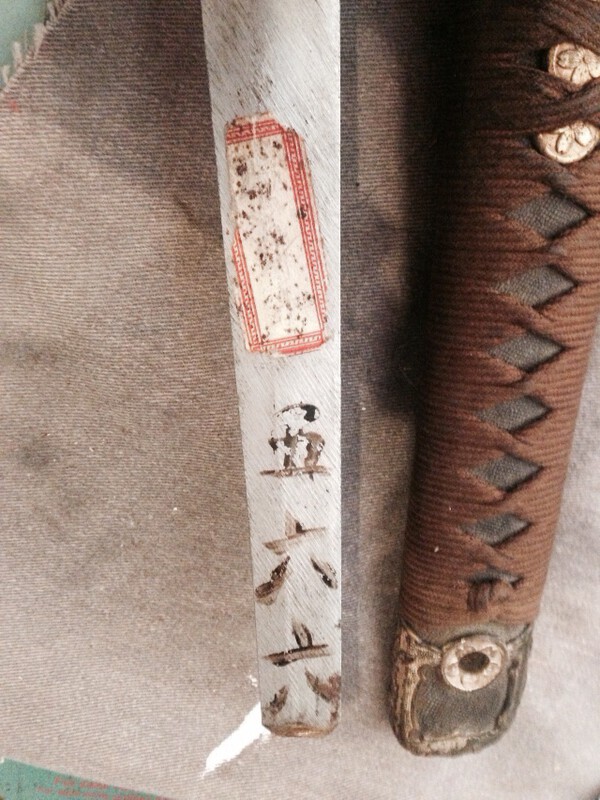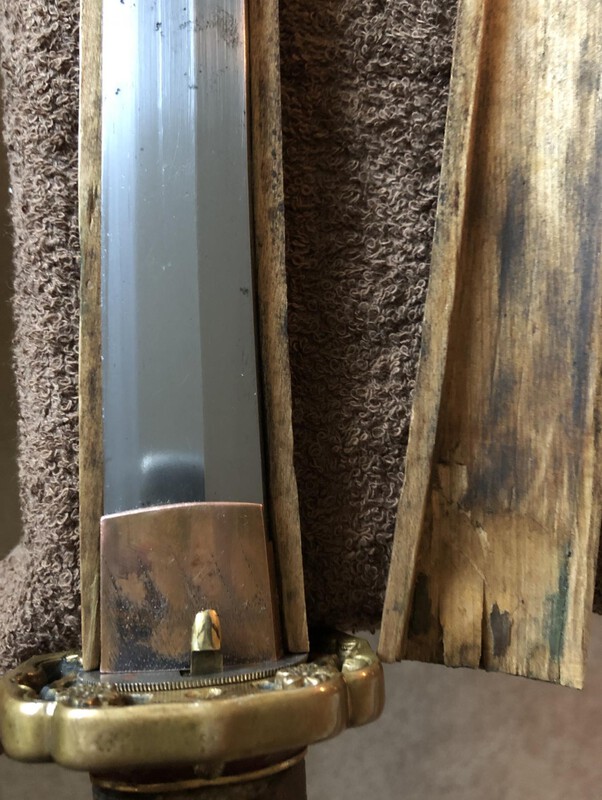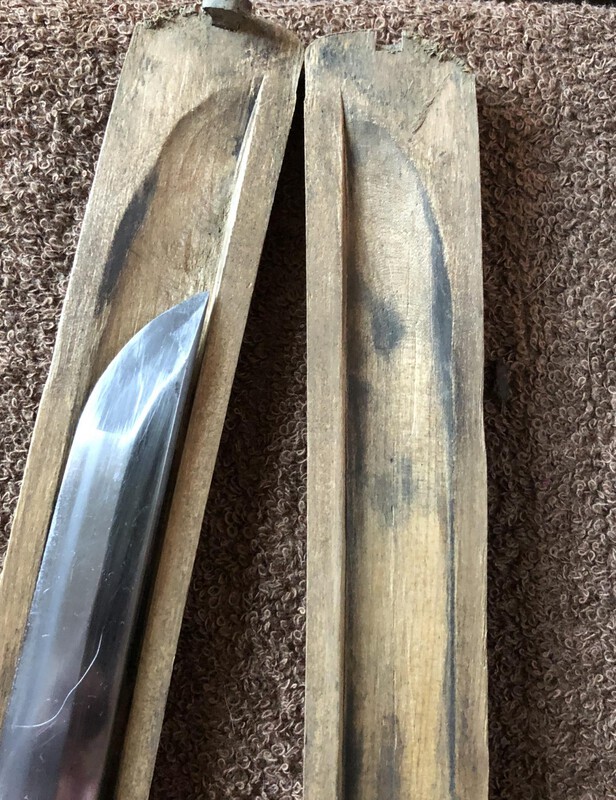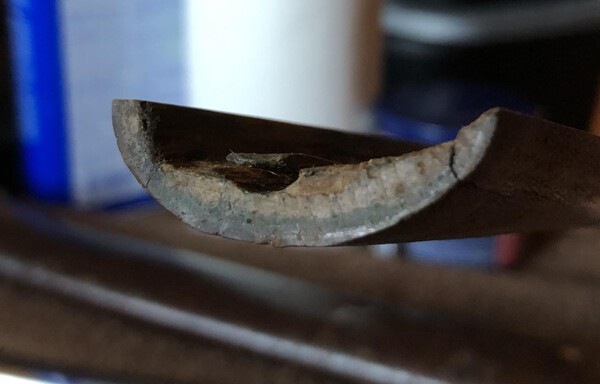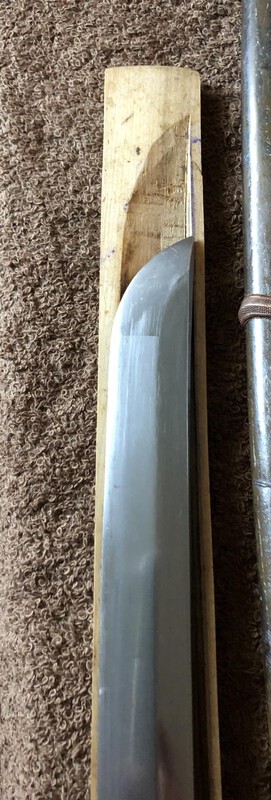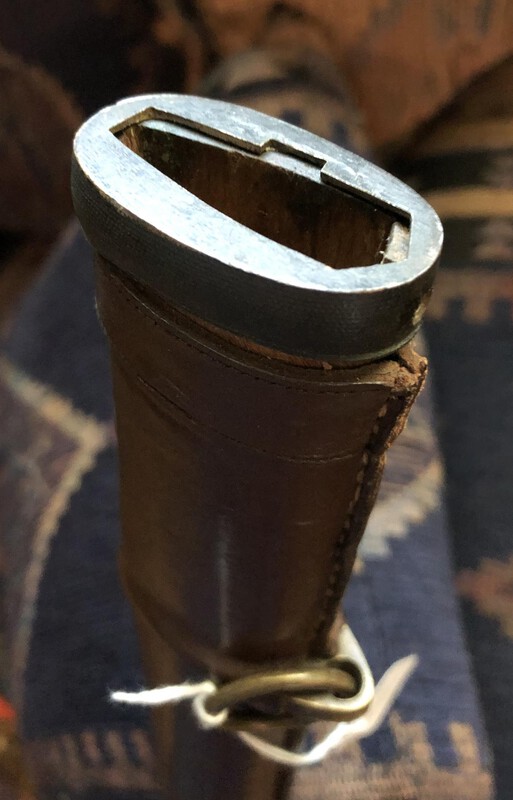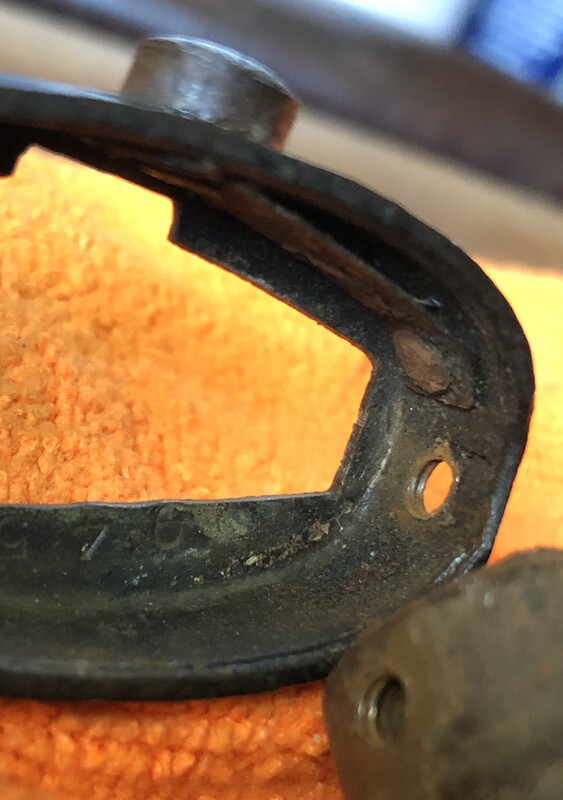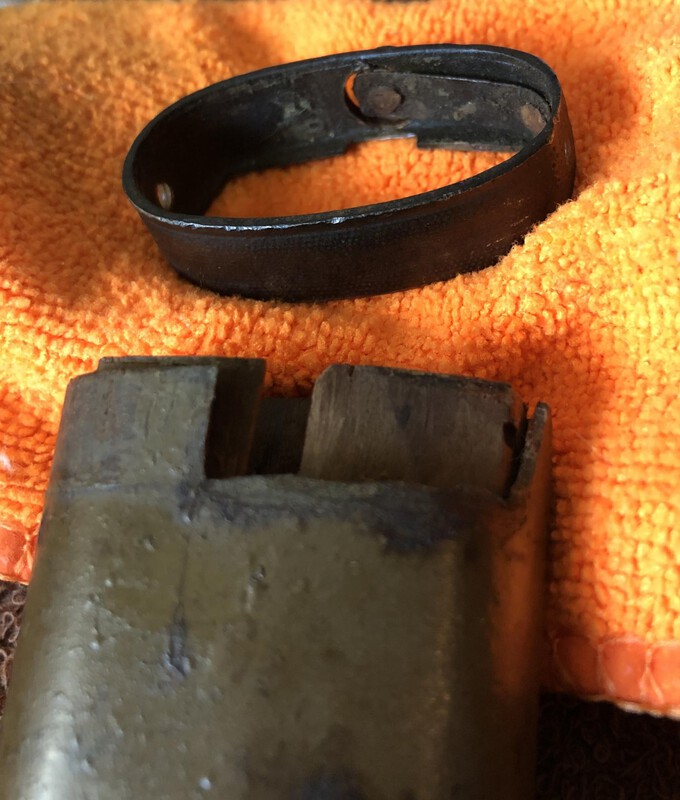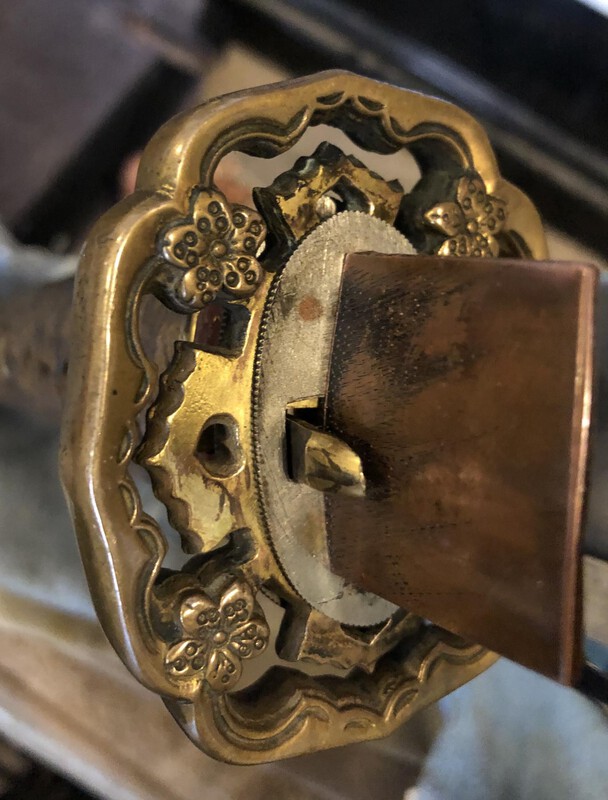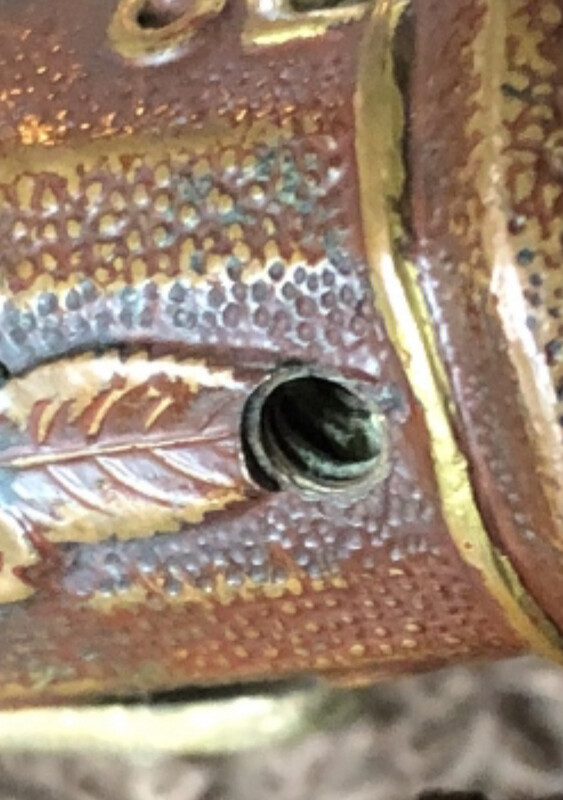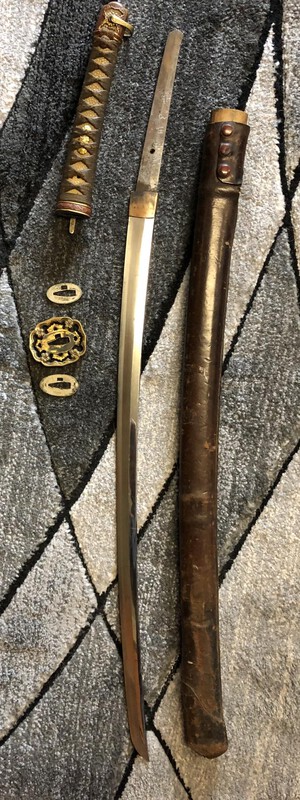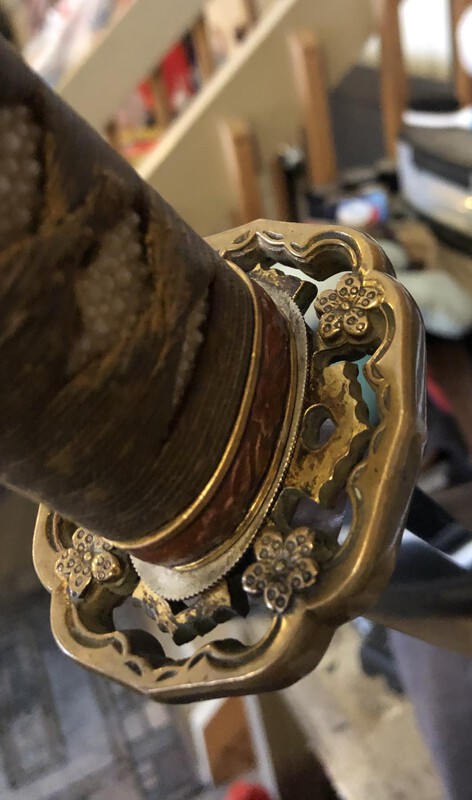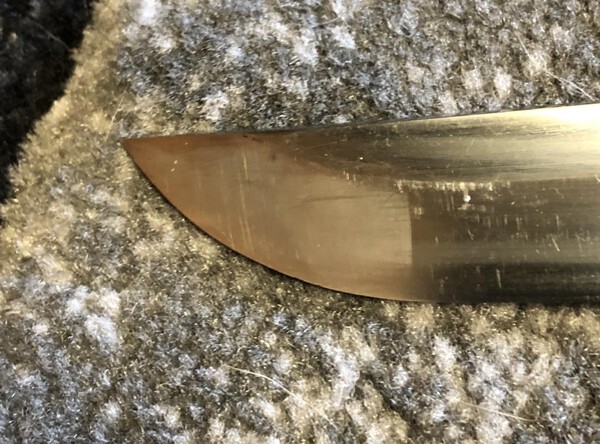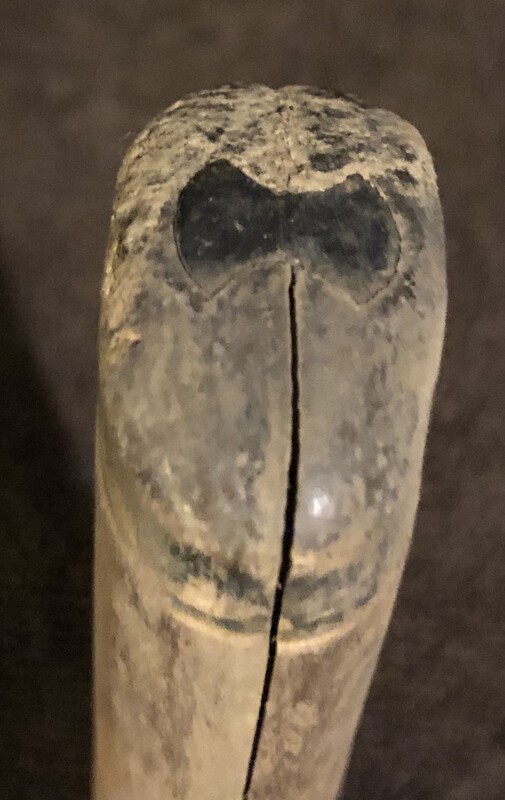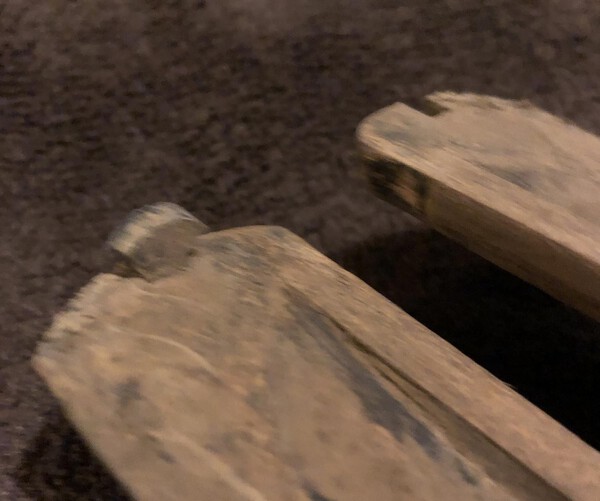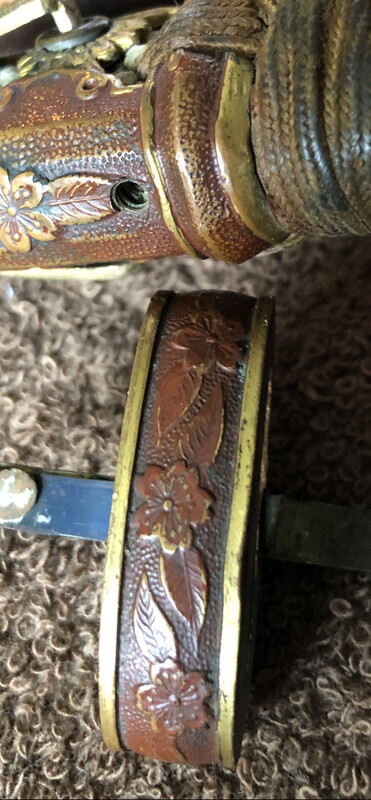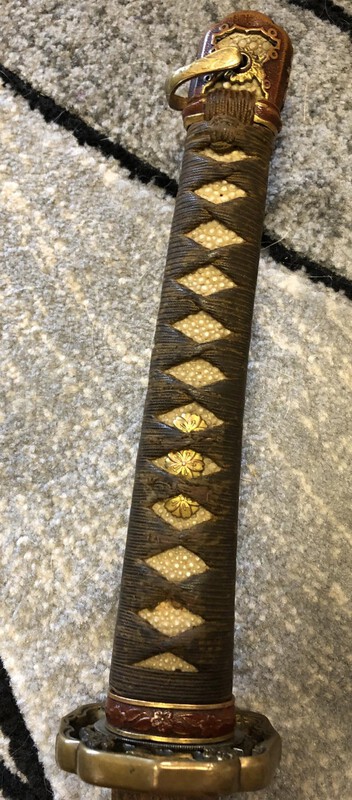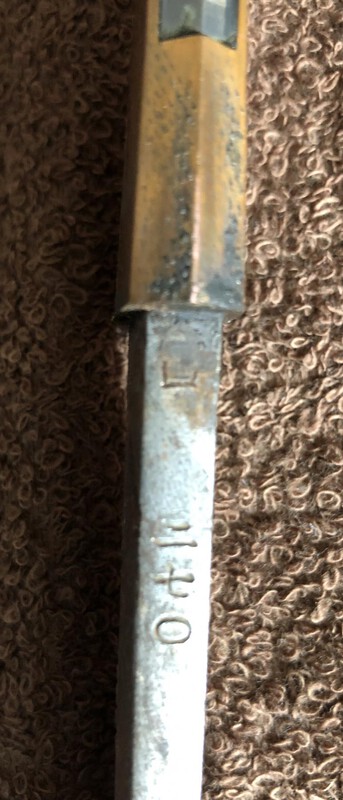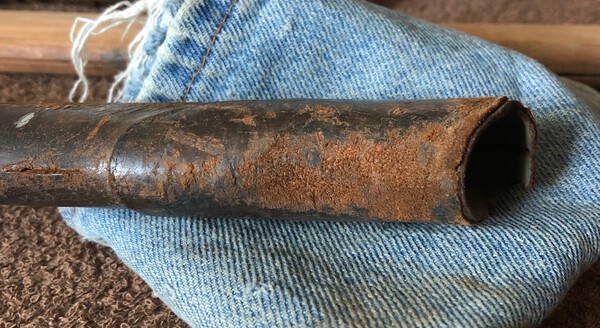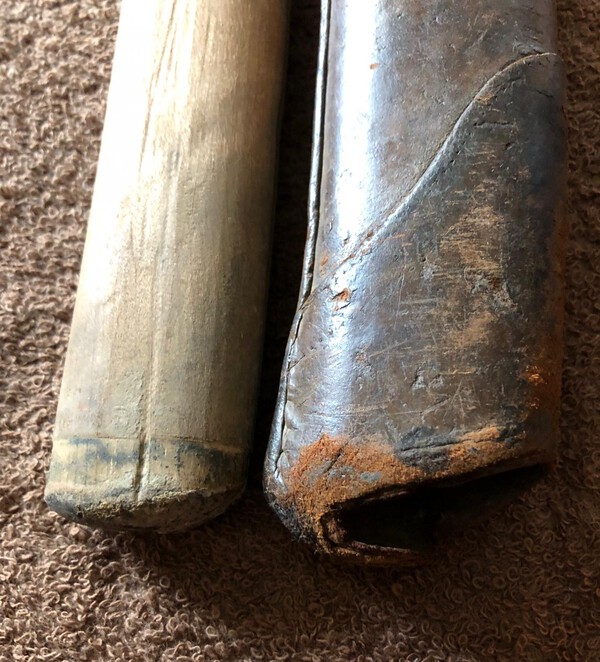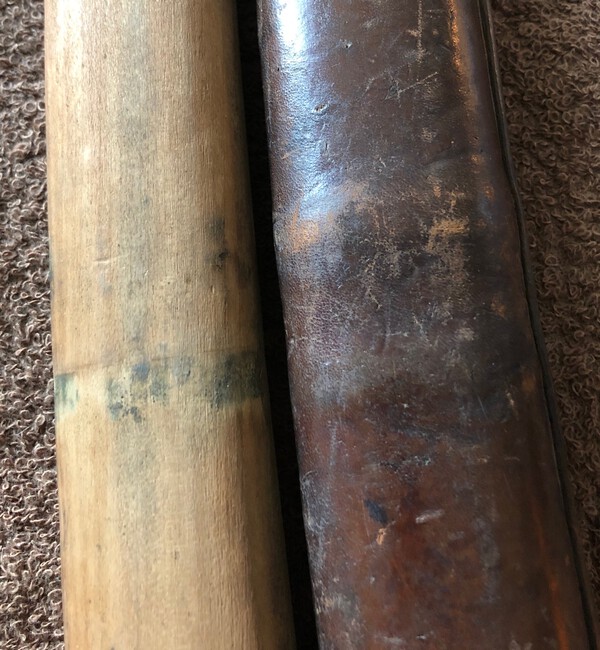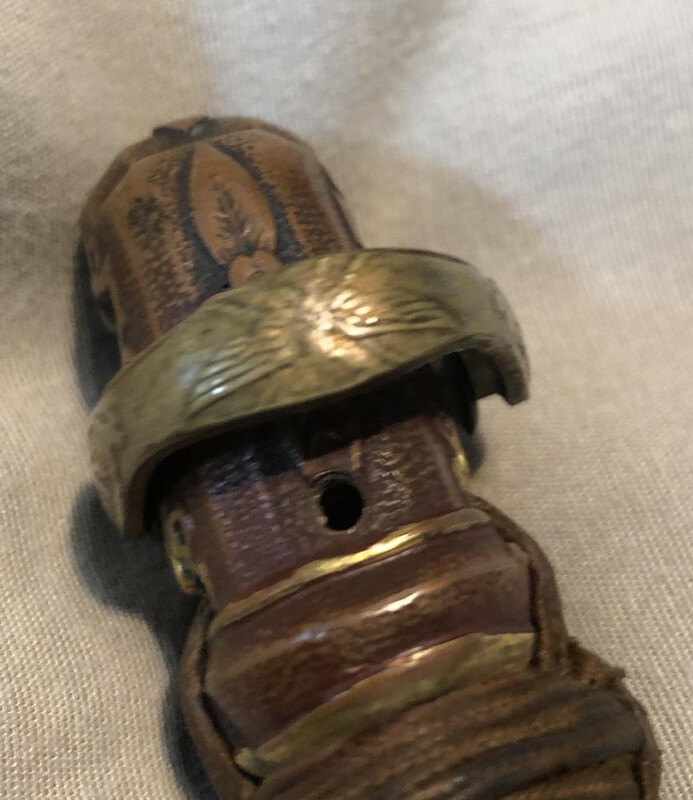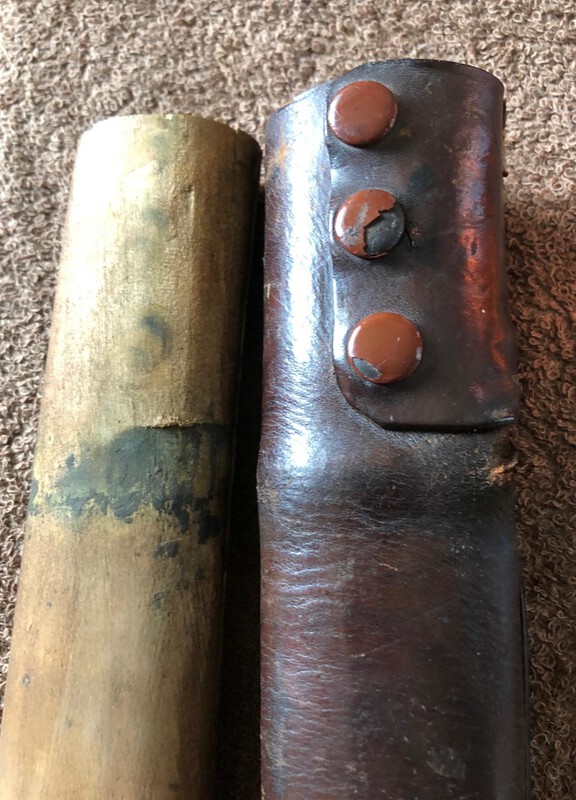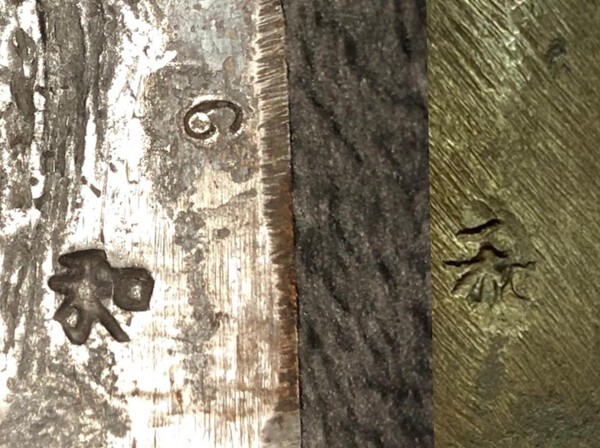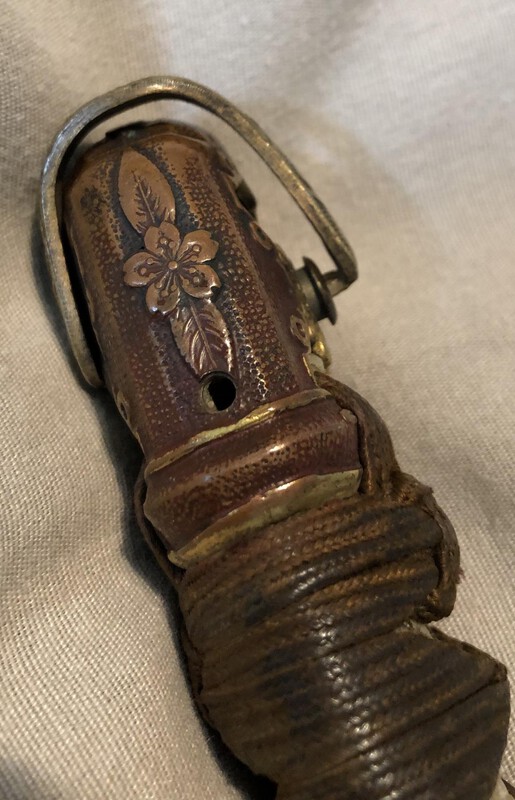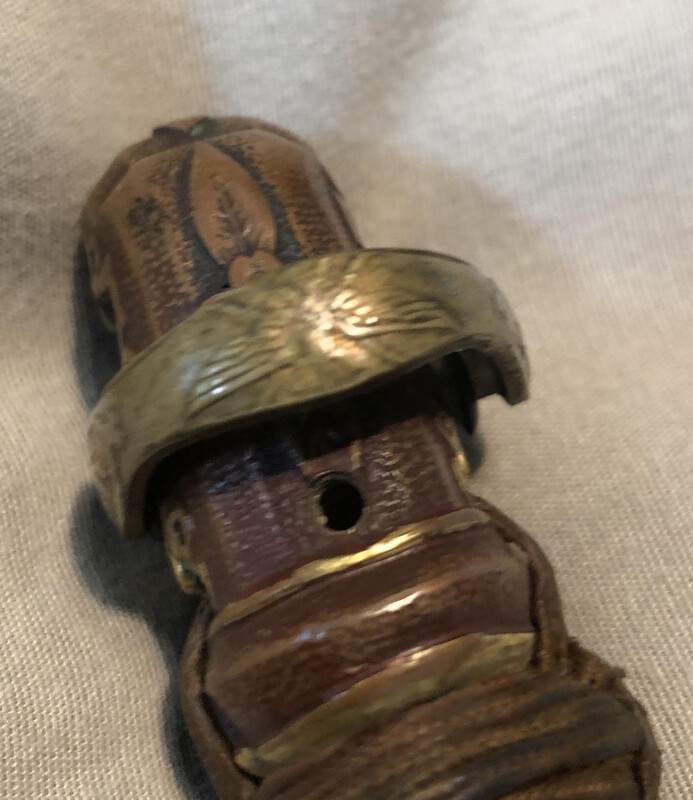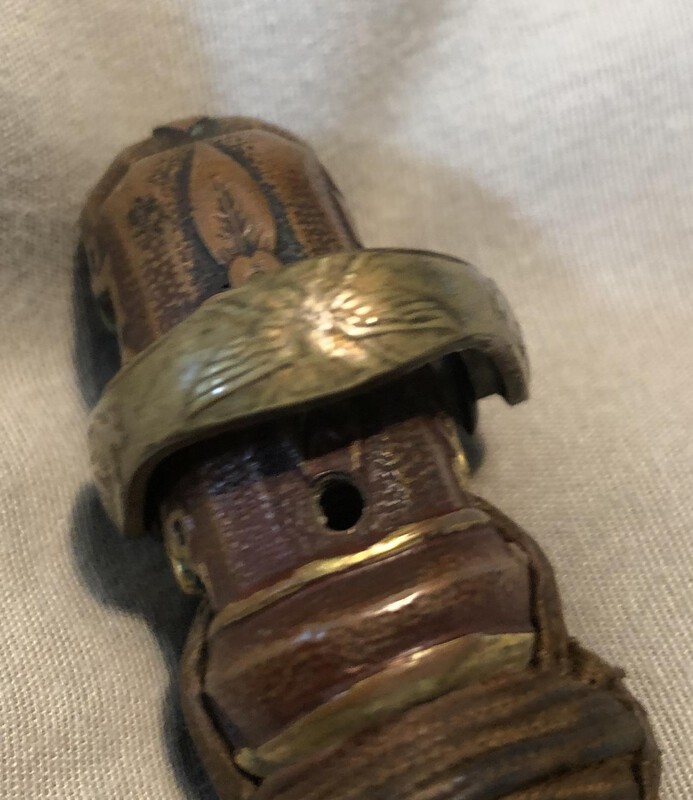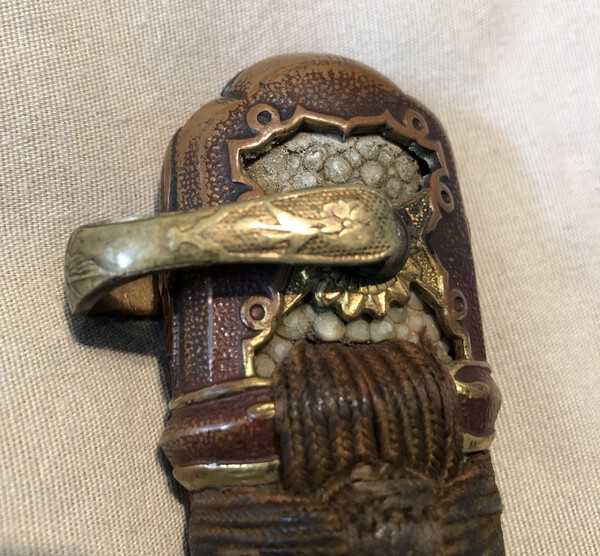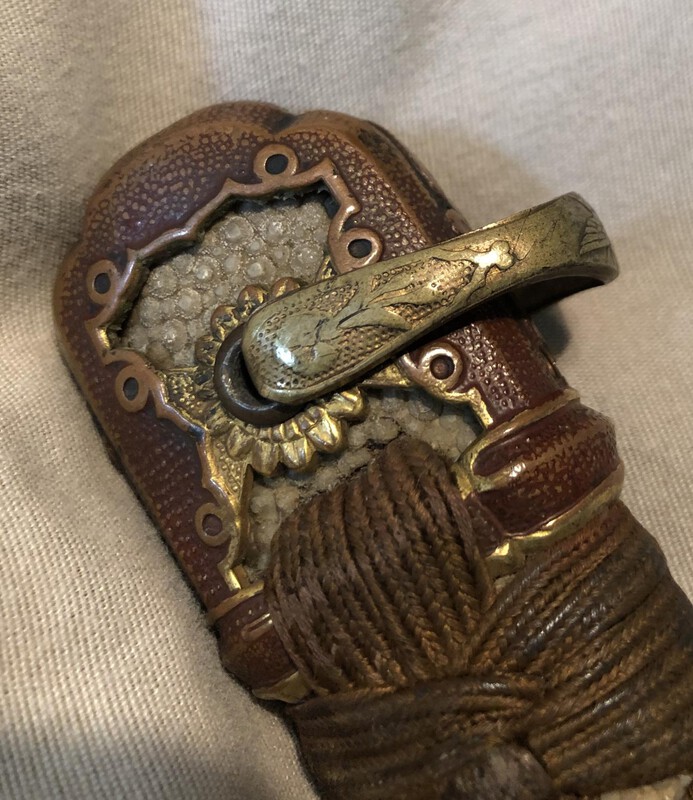-
Posts
13,032 -
Joined
-
Last visited
-
Days Won
155
Content Type
Profiles
Forums
Events
Store
Downloads
Gallery
Everything posted by Bruce Pennington
-

Nlf Gunto Discussion
Bruce Pennington replied to Bruce Pennington's topic in Military Swords of Japan
Saw this at auction and had to get it! Now I finally have one for my collection! Nice blade, anti-rust steel with artificially applied hamon. You can see that it's just on the surface, and however it's applied, spots in it are missed showing the shiny blade through the thin fake hamon texture. The nakago jiri is just rudely snapped off without any effort to finish it. All parts are WAY too shiny and new, including the canvas same' and shiny ito. I'm happy to own one. They were a real piece of post-war Japanese industrial history. -
-
JP, just curious how you determine it's a Seki blade. I'm pretty uneducated on that stuff. It's hard to say about the date/non-stamp. It may simply not have a stamp because it's traditionally made. But to your point, stamps didn't become the norm until 1940, so, if it's not traditionally made, then lacking the stamp puts it 1940 or earlier. Marc, Officially called a Type 97, Kai-gunto. I'd say the owner paid some extra money on this with the shark-skin saya covering, the chuso, and that custom seppa. I can't tell from your picture if the blade is traditionally made or not, but it does have a beautiful hamon! Other guys may know more on the "feather pattern" on the nakago (file marks on tang), but they are not very common on military blades in my limited experience. Gunto prices have been falling the last couple years. Today, these go from $1,200 to $2,400 depending on condition and the buyer's interest. Yours has expensive upgrades, but the gold-gilding is mostly gone, so I'd put it around $1,400 +/- .
-
Two blades have shown up recently, one on the blade I got at auction (Stephen!), and the other on this thread: http://www.militaria.co.za/nmb/topic/31782-early-type-98-unique-engravings-can-anyone-identify-this-gunto/that have large "WA" stamps on the nakago. I KNEW I had seen that stamp before, but until today, couldn't remeber where I'd seen it ..... it was right under my nose - in the Stamps Doc, in Richard Fuller's chart!!! It's the "WA" stamp: "(xii) ‘Wa’ stamp. Probably indicates manufacture in an occupied area, most likely by a collaborating force. Found on poor quality rolled or hammered blades." The examples on the blades themselves are well defined, whereas these other two are on nakagos and poorly defined. SO ... now I don't know what to think about these blades. If fake, does the Chinese faker know the Richard & Fuller book and is using this stamp to pass these blades off as "occupied area" made? Or are they really occupied area made? Until now, the only "WA" examples I had are on the blades themselves: I just find it hard to believe that the fakers would be that sophisticated to use that particular stamp. Of course another option is that the WA stamp is the mark of a particular Chinese faker, and Fuller's assumption was wrong and they are all fakes. What has always bothered me about these particular blades, is the blade shape and kissaki are good Japanese shape, but there is no hamon and the steel-work is obviously low-grade. And of course, the nakago are always bad. BUT, this would fit the latest we have been hearing out of Nick's research at Warrelics, indicating the problems mainland Japan was having with bombed out factories and exporting weapons manufacturing to Manchuria. On the other side of the issue is that the fittings on these are really bad. Almost too bad to call late-war, Manchurian-made, rush-jobs.
-
I KNEW I had seen that stamp before, but until today, couldn't remeber where I'd seen it ..... it was right under my nose - in the Stamps Doc, in Richard Fuller's chart!!! It's the "WA" stamp: "(xii) ‘Wa’ stamp. Probably indicates manufacture in an occupied area, most likely by a collaborating force. Found on poor quality rolled or hammered blades." The examples I'm posting are on the blades themselves, whereas these other two are on nakagos and poorly defined. SO ... now I don't know what to think about these blades. If fake, does the Chinese faker know the Richard & Fuller book and is using this stamp to pass these blades off as "occupied area" made? Or are they really occupied area made? I wish I could see just Black & White, but all I see is grey!!!
-
My first instinct was that this is a fake. Like the guys said above, even DURING the war, fakes were being made. I read an article, with pictures, of Aussies making fake swords for gullible G.I.s! But, and I could be wrong, fakes, over time, have started really badly and gotten better. There are things that are right in the details that fakers normally miss. This post came at just the right time, as we have recently had some info provided by Nick Komiya over at Warrelics about how Allied bombing in '44 and '45 had so devastated Japanese mainland factories, they were transfering production to Jinsen and Nanman with intructions to make stuff (the letter was speaking of rifles and bayonettes) that will stab and shoot, regardless of appearance. This may be what we're seeing here. There is a chance that this is just a hastily made (poorly made) gunto from a shop in Korea or China (Manchuria). Might even explain the colors. I looked closer at the ito and it appears to be brown, but laquered red. Some of the laquer is rubbed off in the area I've circled. The leather saya cover is in Japanese correct styling, but BLUE? And it just looks too new, as do the same' and ito. Maybe that's because it had just been made prior to surrender? It's been sitting at the family home for all these years, so that might explain the newness. I have seen tough cases that could go either way, but usually the fine details make me lean to "fake," but in this case, the fine details make me lean toward "Manchurian made, 1945". But all this is speculation. Mark, you'll have to weigh the evidence and make your own call. In either case, it is a piece of family history, and that makes it valuable regardless of the gunto's origins. Brian - I think the guys on the Military Thread would enjoy this discussion. Think a move is possible?
-
Guy also wanted to pass on the translation of this one: 昭和十八年二月 Showa 18th Year, February 高正 Takamasa According to Marcus Sesko's book: TAKAMASA (高正), Shōwa (昭和, 1926-1989), Gifu – “Takamasa” (高正), real name Yasuda Yoshitarō (安田芳太郎), born April 7th 1912, he worked as guntō smith"
-
Steve, Got some help on your painted kanji: " 拔五三マ Nuku 53-ma I'm fairly certain that kanji is 拔 -- but I'm not a native-reader and am looking at the kanji with "gaijin" eyes. If it is 拔: 拔 is a variant of 抜; both mean to extract; omit; pilfer; pull out; quote; remove. The マ [ma] is probably a subset indicator (i.e. 拔53-L). I have no idea what the 拔 code means. Maybe this was just a code for assembling the furniture to the blade" This came from Guy. It's a puzzling one because, I'm sure you know already, painted stuff on nakago are, as far as I've ever seen, are just assembly numbers from the koshirae shops. This is more elaborate than normal. It makes me think someone was telling another worker "pull koshiare 53 マ for this one". But I'm purely pulling stuff out of my rear-end here.
-
It is a challenging issue. Like Thomas, I at first felt these were made for full leather wrap/cover as the one in Dave's example, and were simply litterally last-ditch rinji-seishiki. Yet, when you read Nick's list of characteristics for the navy R-S, they sure seem to fit the bill. That one in Steve's post #2 even has a rising sun seppa! And as Steve has pointed out they are all made in the same manner (almost all). Now, that simply could mean a single shop was making these for the last ditch R-S, so of course they'd be similar. But Steve's last example was made in 1943 - not "last-ditch" at all. But if not "last-ditch", then why would Navy put out something, that compared to the standard kai, and even the Army R-S, is so UGLY? "Ugly" is usually associated with "last-ditch". Yet again, I go back to the Navy's list of characteristics ... I don't know. It's a very interesting item.
-

Does Curiosity Kill the Cat?
Bruce Pennington replied to Bruce Pennington's topic in Military Swords of Japan
Well that makes sense! It’s the only 2-button I’ve ever owned and I’d never taken it apart, so I never knew. Well, there’s another cat killed!! Ha! MRS is short for Manchurian Rinji-seishiki: http://www.militaria.co.za/nmb/topic/31767-manchurian-rinji-seishiki-sword/ -
I can't tell, Neil. Even magnified, I can't tell if I'm seeing threads or just two layers of something in the hole. My gut says it's threaded.
-
Dang, you guys just blew me out o' the water! I've never seen this before (if I have don't remind me, let me enjoy this!!! Ha!) Here's the link to the thread Chris is referencing: http://www.militaria.co.za/nmb/topic/30677-navy-rinji-model/?hl=%2Bnavy+%2Brinji Here's the description provide by Nick: "the navy also issued a "Last Ditch" Rinji spec directive for officer swords on 27th March 1945. Directive Number 54 said "1: Gilding, Gold Colored Metal and Cherry branch engravings are to cease, 2:Sarute not to be attached, 3:Only one Haikan (scabbard ring) to be present, 4: Use of animal skins to be minimized, 5: Push button type locks to be changed to tie-cord type, 6: Scabbards to be wrapped in tree bark and be finished with black lacquer." All of these on this post appear to fit the description! Wow!
-

Does Curiosity Kill the Cat?
Bruce Pennington replied to Bruce Pennington's topic in Military Swords of Japan
Wow Neil, I can't believe I have a koshirae item you don't already have!!! (or maybe you just don't take your saya apart? This is on a 1945 standard Rinji seishiki model (well it's got a star-stamped gendaito in it; but it's not the MRS 1945, just the "normal" kind.) -
Matt! That’s exactly in the right place as the one I have.
-

Does Curiosity Kill the Cat?
Bruce Pennington replied to Bruce Pennington's topic in Military Swords of Japan
Bruno & Chris, thanks. Yes, I suspect that might be true with the demands placed on the industry to crank these out en-masse. Bruno, it's unsigned, but the blade is clearly a Takayama-styled blade - short with bulbous kissaki: -
Spun this off of the "Airborne" Sarute thread. We were chasing a different rabbit. Made some interesting discoveries while pursuing Neil's question of whether my latest '39 Mantetsu is a piece-together item. First the '39 Mantetsu: Since I had the liner out of the saya for cleaning/drying, I laid the blade in one half of the liner to see how it fits and viola: It's a "close" fit on the curve, but as you can see, the liner was made for a much longer blade. Now, I will have to inquire into liner-making to see if that was the norm, especially for mass produced WWII gunto, or find more examples to compare. You can see, per Neil's observation that the blade came with a chuso, but that point isn't conclusive as the koiguchi is missing, and the liner is actually cut out to fit the chuso. But since I started looking for other examples, I tried to open up the other two Mantetsu saya, but couldn't get the liners to budge. Hmph. I opened up a combat saya on my Takayama-to, and again viola: This fit was even WORSE! Both curve and length were visibly off. Then I noticed the koiguchi and it's made for a chuso, but the blade doesn't have one, nor is the liner cut for one. Another Harumph, because now that means that the combat saya for my Takayama-to isn't original. I had always been bothered by the new look of the leather, the pattern of the leather pieces didn't fit normal WWII style, and it was brown rather than Navy black. So, curiosity DID kill that cat! Then, I tried my Rinji-seishiki, with star-stamped Kunitoshi, but couldn't get the liner out. Oddly, it was dry inside and was loose, but still wouldn't budge, when I noticed a jiggling sound at the end of the saya. The ishizuki is pinned, with both ends peened, and it jiggles when I wiggle the liner! So appearantly, the pin must go all the way through the liner to the other side. Harumph. Thought for sure I'd fined a good custom example to see if the liner was fitted perfectly. In re-assembling the saya I noticed the chuso was quite unique! Neil, have you seen this before? The edge of the saya had actually been cut larger for the different chuso design.
-
They weren't cut away in Thomas' example, though. Differences with Thomas' and mine - his was punched in for the "pin" where mine looks drilled (though Neil's looks drilled, too). Differences in methods are easily explained by different shops, different techniques. But my key problem is the holes are on both sides of the kabutogane.
-
"No greater love..." Neil, "than a guy who lays down his Kai for his friends"! I think I read that verse somewhere? I scanned the Mon thread and there are some with mon much lower than yours. But it still doesn't make sense that the holes are on both sides. I'm sure I haven't seen a kabutogane with mon on both sides, have you? {but I fear we're side-tracking this great thread}
-

Attention Mantetsu Owners: A Survey
Bruce Pennington replied to Bruce Pennington's topic in Military Swords of Japan
Oh my Gosh! I just noticed the Maximum Ugly blossoms on that tsuba! I realize there were lots of variations from shop to shop, but this one would win 1st Prize at the Annual Ugly Tsuba Contest!!! Well, the rest of the tsuba is quite nice, actually, but THOSE BLOSSOMS!!! AHHH! A cat-scratch habaki, nice fuchi and kabutogane, then this. It doesn't make sense. Could this be a piece-together? -
-

Attention Mantetsu Owners: A Survey
Bruce Pennington replied to Bruce Pennington's topic in Military Swords of Japan
More pics. Odd there are no boar’s eye seppa. Handle is snug so there wouldn’t be room to add them. Interesting way the liner maker joined the end of the two halves together: -

Attention Mantetsu Owners: A Survey
Bruce Pennington replied to Bruce Pennington's topic in Military Swords of Japan
Just added a '39 Koa to the collection and study! It's in combat saya and has the "Kite" or "Airborne" sarute. Serial number ロ(RO) 270, our 2nd RO. Blades in good shape, but the saya looks like it was worn by a really short guy who litterally dragged it on the ground everywhere he went, and he must have covered some miles! The bottom edge of the leather is completely worn through. What puzzles me is the missing sarute, the metal bands mid-way down the saya (you can see the imprint on the wood and the bulge in the leather where they used to be) and some sort of metal end-cap on the wood (can see the imprint on the wood). I'm guessing the G.I. that brought it back must have disassembled it and failed to put those parts back together. The leather at the top of the cover is fragile and broken where the snaps come around. Nice fuchi and kabutogane with extra gold coloring at the edges. I have some pics now, and will post more when I can. I bought this to re-sell .... but I don't think that's going to happen!!!! -
Close-ups of the blade tip too. While we wait for more pics, I will say that at first glance, I'm leaning toward Chinese reproduction. I got suckered by one at an auction recently, and it has an almost identical stamp, posted below. What makes me hesitate, though, is that your nakago is much better made than the majority of Chinese fakes. In the case of my fake, the blades was made pretty convincingly, but the nakogo was horrible.
-
I have heard/read that some guys did that before turning their swords in at the end of the war, and it was my first thought too, but the hole is on BOTH sides of the kabutogane. Neil - I know I've seen this before. Is it you that has a similar kabuto with holes?
-
Got one! Came on a ‘39 Mantetsu in combat saya! Looks old and worn fitting the wear on the entire piece. Sarute isn’t painted like the rest of the fittings, which says to me that it was made by a different shop and added by the koshirae shop or the officer after purchase.



